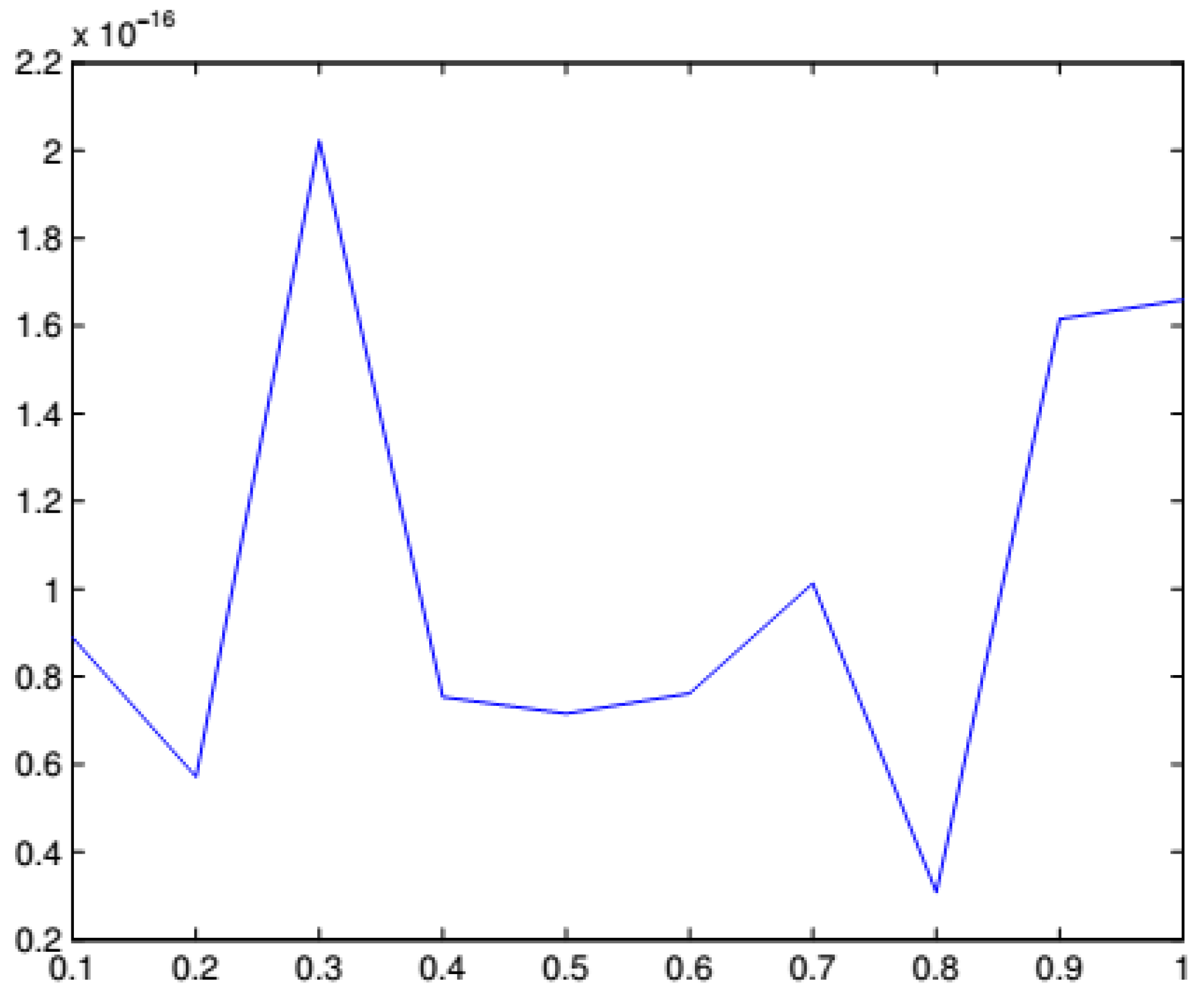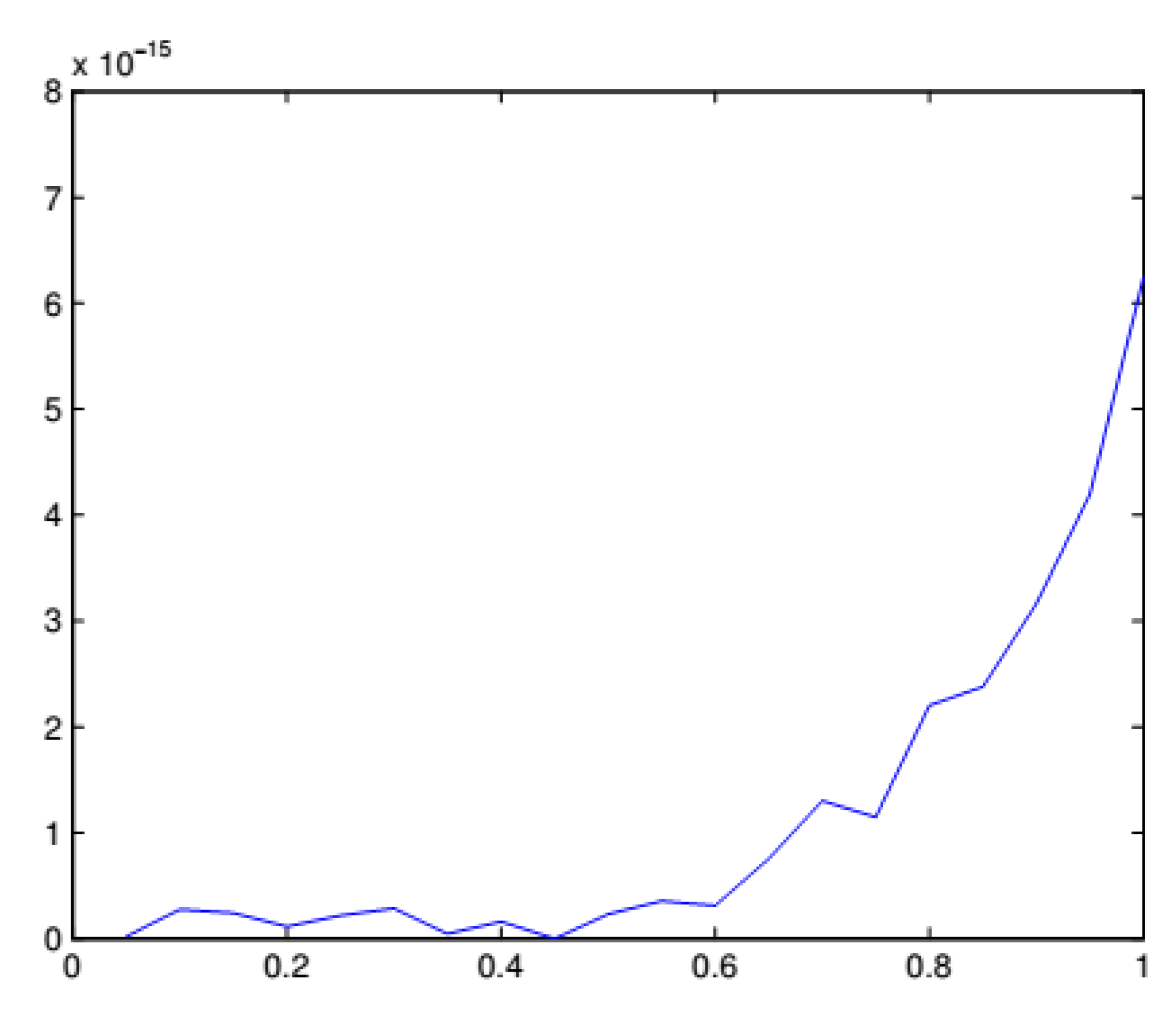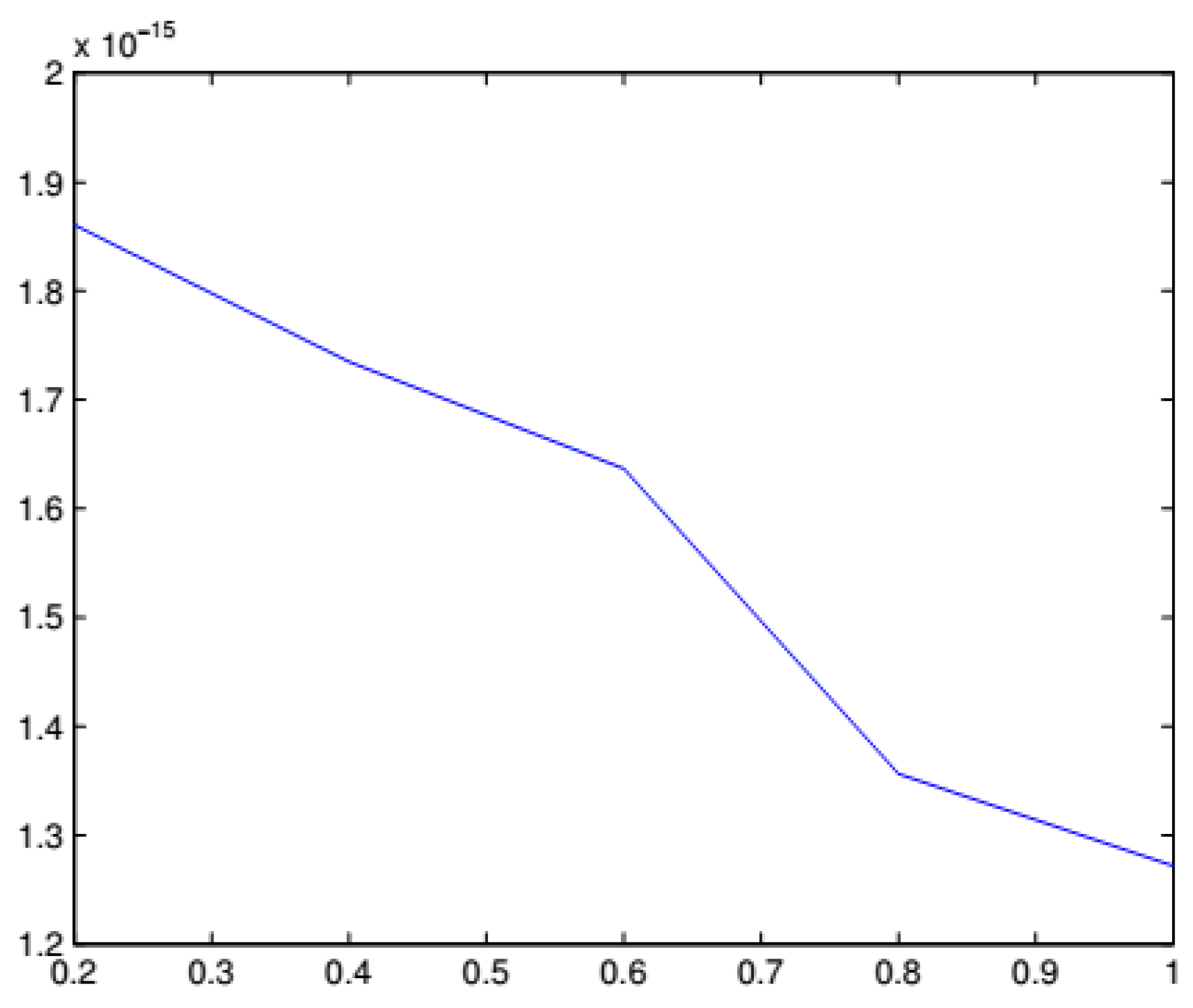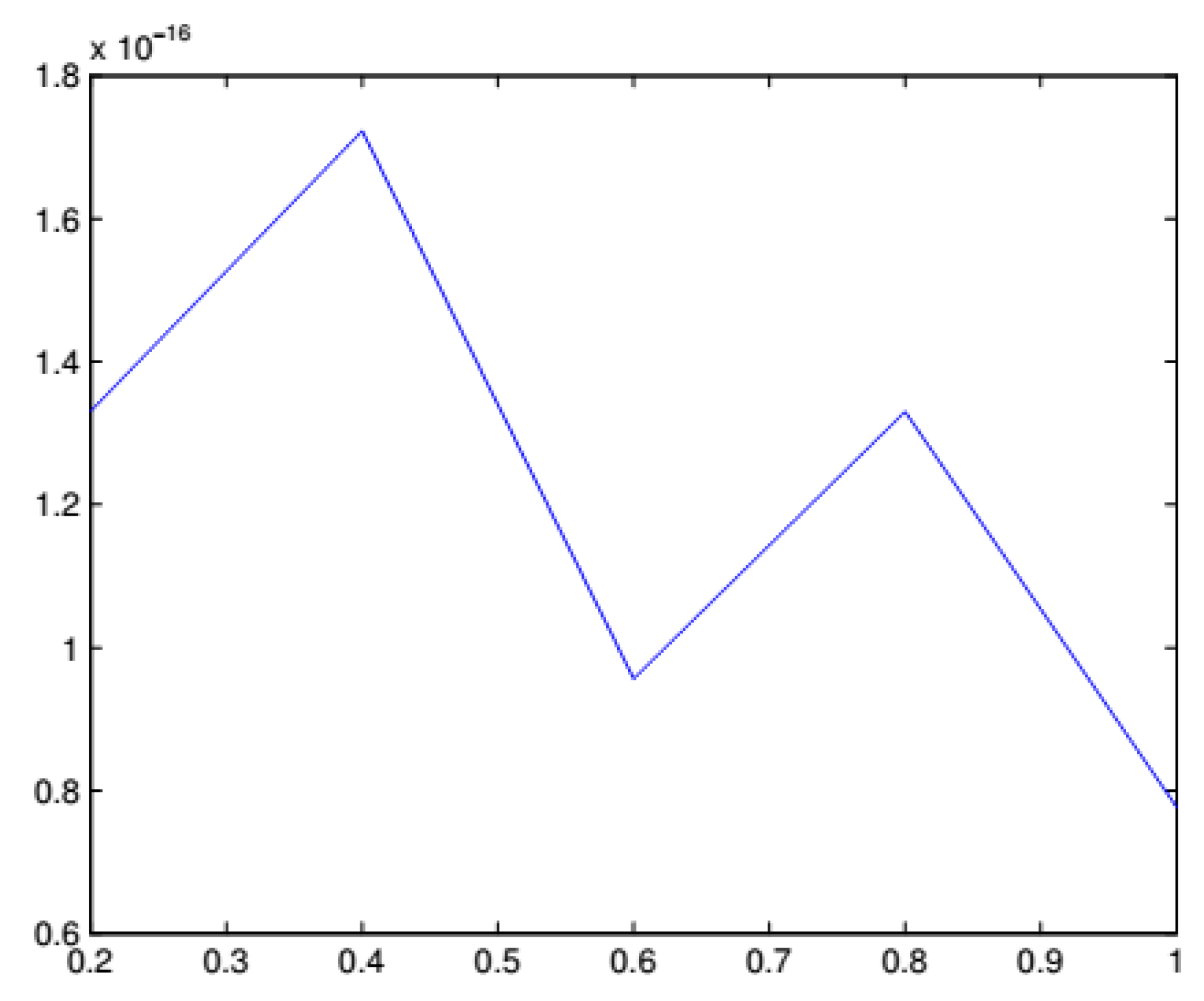In this section, the proposed scheme is described to deal with the VIEs of the second kind. The main purpose of the suggested method is to improve the results of the classic collocation method by dividing the interval into some sub-intervals and applying the collocation method in each of them.
3.2. Solving VIEs of the Second Kind by IOBCM
In order to apply the idea of the suggested scheme, first we divide the interval
into
sub-intervals as
where
. Then, we consider the approximation of
by Bernoulli polynomials of degree
in each sub-interval as follows.
where
,
, are unknown coefficients to be determined and
is define as Eq. (4) and
According to Eq. (10), the approximate solution is considered as a piece-wise function in the proposed method.
In general, there are unknowns, , to be determined. To find these unknowns, we do as follows.
For finding the unknowns
, suppose that
. Then, according to Eq. (10) the approximate solution in the interval
is
Substituting Eq. (12) in Eq. (6) leads to
We use the collocation method to determine unknowns . Let be the zeros of SCPs of degree in the interval as collocation points. For example for , and the collocation points are , , , , , , , , , , , . Then, a system of nonlinear algebraic equation is produced that could be easily solved.
In the case of
, that is the equation is linear, equation (13) could be stated as follows.
By substituting collocation points
in Eq. (13) we will have
This equation is a system of algebraic equations with unknown coefficients , which can be written in the following matrix form.
In which
vector is defined as Eq. (11) for and
By using the coefficients , which have been determined in the previous stage, we can find the unknowns , as follows.
Suppose that
. Then, Substituting Eq. (10) for
in Eq. (6) gives
This equation can be written as follows.
Let
be the zeros of SCPs of degree
in the interval
as collocation points. Substituting the collocation points in Eq. (17) leads to the following relation.
This equation is a system of algebraic equations with unknown coefficients , . This system could be stated in the following matrix form.
where
vector is defined as Eq. (11) for and
Now, we can present a general formula to find the unknowns in in the interval .
Suppose that
. Then, according to Eq. (12) the approximate solution in the interval
is
By substituting Eq. (19) in Eq. (6) we will have
This equation would be stated as follows.
Let be the zeros of SCPs of degree in the interval as collocation points. Substituting the collocation points in Eq. (20) yields
This equation is a system of
algebraic equations with unknown coefficients
,
. It has the following matrix form.
where
vector is defined as Eq. (11) and
Therefore, if we continue this process step by step and find the unknowns in the next subintervals using the coefficients which have been determined so far, then all unknowns will be obtained finally.
For finding the unknowns in the last interval, suppose that
. Then according to Eq. (10) the approximate solution in this interval is
Substituting Eq. (21) in Eq. (6) gives
This equation can be written in terms of
as follows.
Let be the zeros of SCPs of degree in the interval as collocation points. By substituting these points in Eq. (22) we will have
This equation is a system of algebraic equations with unknown coefficients , which can be stated in a matrix form as follows.
In which
vector is defined as Eq. (11) for and
Eventually, we can calculate the solution by the following piece wise function.
where
is the approximation of the exact solution
.








